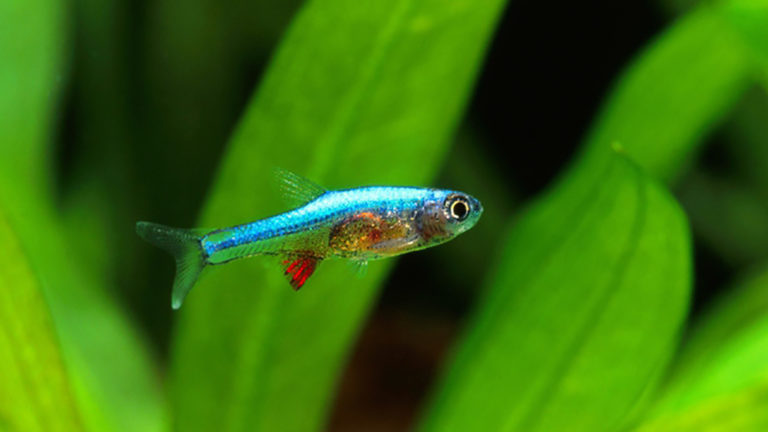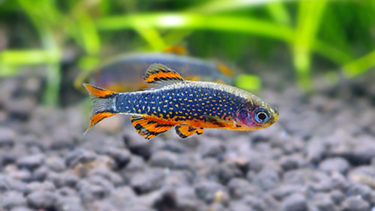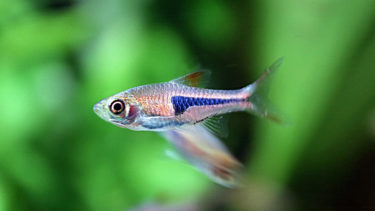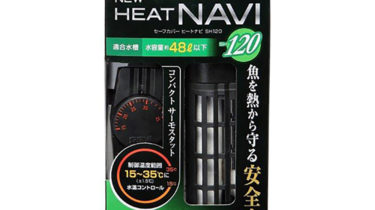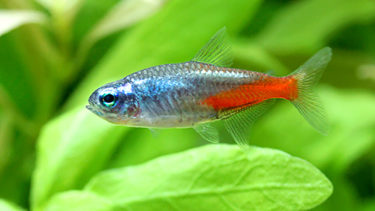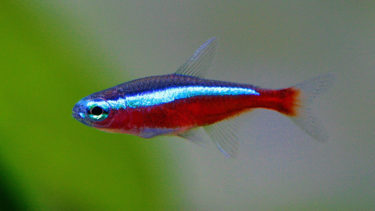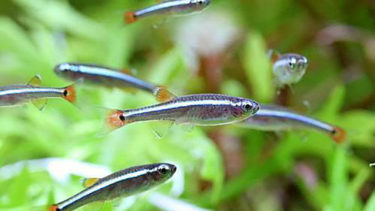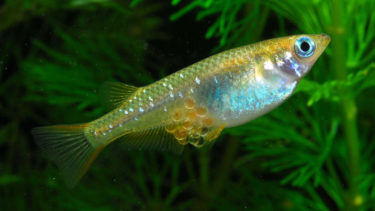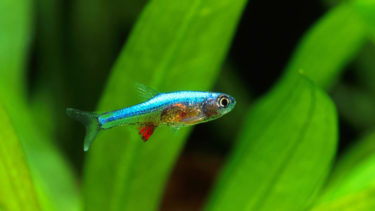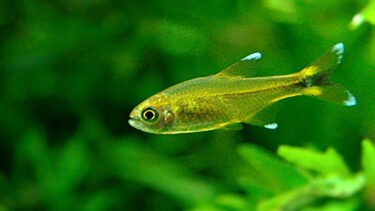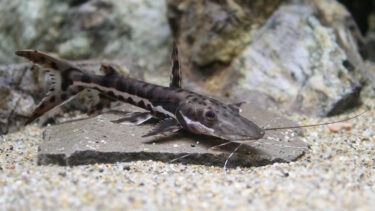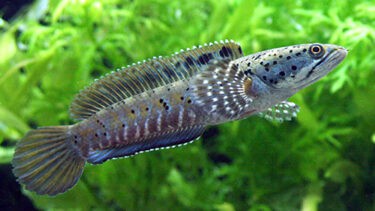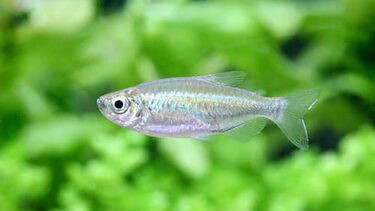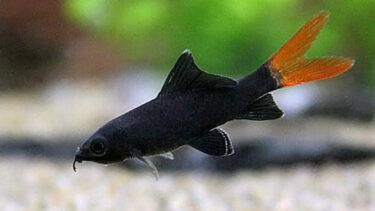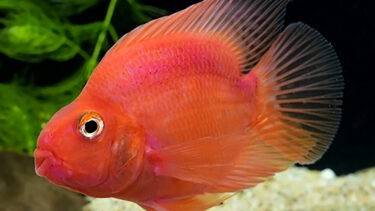The Rasbora acerodyi Blue is a tropical fish of the carp family Sunda Danio of the order Carpidae, native to the islands of Sumatra and Borneo in Indonesia, Southeast Asia, and has a beautiful neon blue body color on its back part. In this article, we would like to explain in detail the characteristics and how to keep the micro Rasbora hanabi.
What is Las Bollas Accelerody Blue?

The Rasbora accelerodyi Blue is a tropical fish in the family Carpidae, genus Sunda Danio. The origin of the Rasbora accelerodyi Blue is Sumatra Island and Borneo Island in Indonesia, Southeast Asia.The body color of the Rasbora accelerodi Blue is characterized by its transparent skin with a beautiful neon blue near the back and bright red/black near the abdomen. Originally, the Rasbora excelodyi Blue was a tropical fish of the genus Rasbora, but later became a member of the genus Sunda Danio as the genus Rasbora was subdivided more finely. Therefore, it also has another name as "Sunda Danio Accelerody Blue. This website uses "Rasbora axelrodi Blue" because it is more widely recognized than "Sundadanio axelrodi Blue".
The Microlasbora hanabi is a very beautiful tropical fish that is native to the Salween River in Myanmar, Southeast Asia, and belongs to the Celestictis genus of the carp family, Carpidae, with a dark blue base color and bright yellow speckled pattern. In this article, we will introduce you to the Microlas [...].
Rasbora espeyi is a beautiful tropical fish of the Trigonostigma genus of the Carp family, Trigonidae, native to Thailand, Malaysia, and Indonesia in Southeast Asia, and characterized by its orange coloration and black patterns on the sides of its body. In this issue, we will introduce you to the Rasbora espayi [...].
How to keep Rasbora accelodyi Blue
The Rasbora Accelerody Blue will be an easy breed to keep. The lifespan of the Rasbora Accelerody Blue is approximately 2 to 3 years. The body size is about 2 to 3 cm. However, both lifespan and body size vary depending on the environment in which they are kept and the food they are fed. They prefer slightly acidic to neutral water. The micro Lasbora hanabi is classified as a tropical fish, so if you keep it in Japan, it will need a heater in the winter.It is also recommended to keep them in an aquarium with aquatic plants, as they tend to be more secure and less stressed.
A heater is a device that maintains a constant water temperature. If you go to a specialty store that carries heaters, you will find a wide variety of types. Some people may be at a loss as to which one to choose. In this article, we would like to explain about such heaters [...]
Points to keep in mind when mixing swimmers
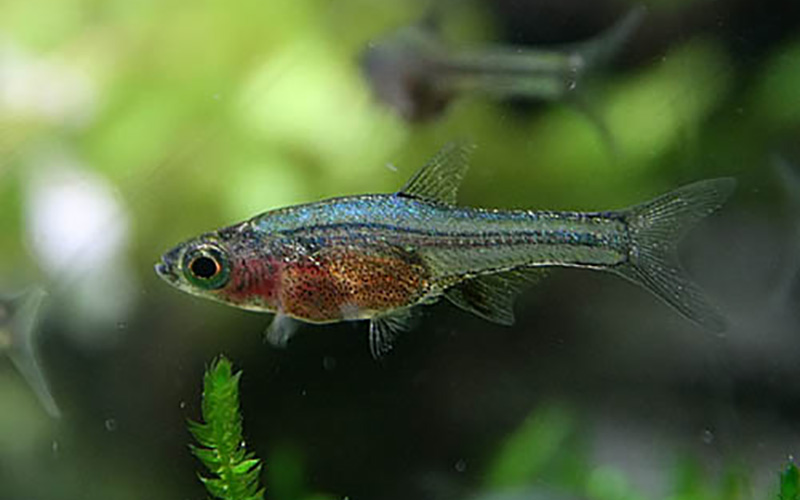
Regarding mixed swimming, the Rasbora axelrodi Blue has a mild temperament. Therefore, if the breed with which they are mixed is territorial or aggressive, the Rasbora Accelerodytes Blue may be attacked, resulting in injury or even illness due to stress.Recommended species for mixing with Rasbora accelerodyi Blue are small fish such as neon tetras and other calasin species and red fin fish. When mixing with other species, make sure that the Rasbora Accelerodytes Blue is eating well, as it is common for the other species to take the food.
The neon tetra is a tropical fish in the family Carassinae, and is a beautiful fish with a blue glow from its head to its tail fin. In this article, I would like to explain in detail the characteristics of the Neon Tetra and how to keep it. What is a Neon Tetra?
The cardinal tetra is a tropical fish of the family Carassinae of the order Carassinae that lives in the Negro and Amazon rivers in South America. It is a beautiful fish with a blue glow from its head to its tail fin. In this article, I would like to explain in detail the characteristics of the Cardinal Tetra and how to keep it. [...].
The redfin is a tropical fish of the carp family Tanichthys, which is native to Baiyunshan in Guangzhou, China. Its body color is mainly silver-gray with a dark blue line from the back of the eye to the base of the tail fin. In this article, we will explain in detail the characteristics of the redfin and how to keep it [...].
Points about spawning
Many people who keep Rasbora accelodyi Blue want to breed them. However,There is not much information on the breeding of Rasbora accelodyi Blue, and breeding in a typical breeding environment tends to be more difficult.However, some people who have bred them have reported that they had eggs on them when they were left with water plants, so if you try to breed them, be sure to include water plants that will allow them to attach eggs.
Many people who keep killifish want them to spawn. However, not many people know about spawning and what they need to do to prepare for it. This time, we would like to explain the method of spawning and the points to be noted [...].
If you have kept goldfish for a long time, you may want to try to breed them. However, if goldfish spawning is not done with care, there is a high possibility that the goldfish will weaken. In this article, I would like to explain in detail the method and precautions for spawning. The time of spawningThe time of spawning of goldfish is [...]
What to look for when keeping Rasbora accelodyi Blue
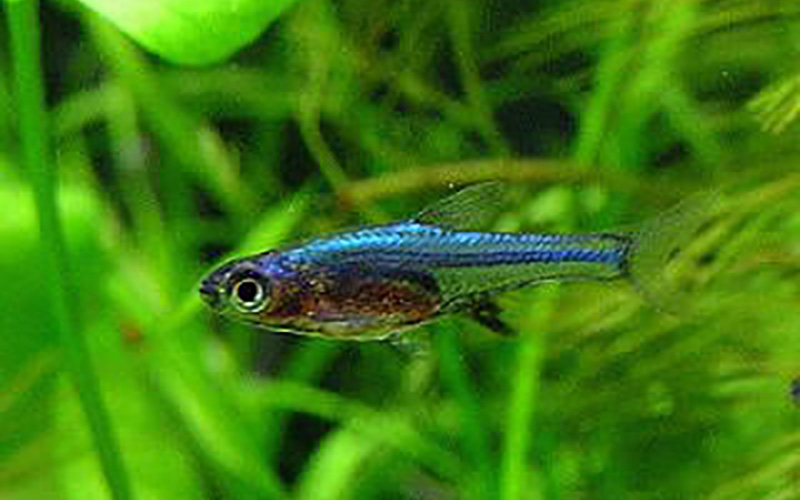
The Rasbora accelerodi Blue is recommended for its ease of care and mixed swimming, but it is a little-known species. The reason for this is the history of classification changes.Rasbora accelerodi Blue is a tropical fish with a very beautiful blue back, but it is not in a very beautiful state when it is displayed at specialty stores. However, it is not in a beautiful state when it is displayed at specialty shops. After it is bred and the water quality is adjusted, its body color gradually becomes more beautiful. Rasbora accelerodyi blue is gradually becoming more and more common in specialty stores. If you like or keep small tropical fish and are looking for a variety to mix with neon tetras and other fish, this is a highly recommended variety. If you have a chance to see them in a specialty store, I recommend you to take a look.

